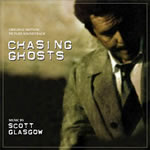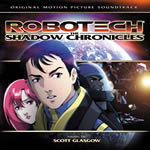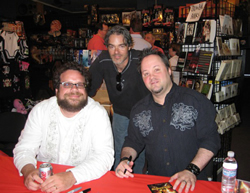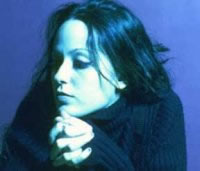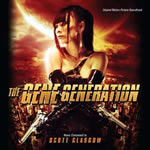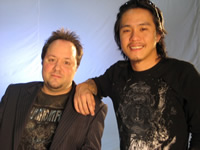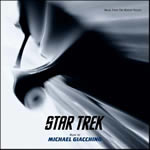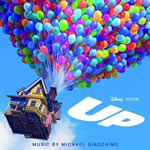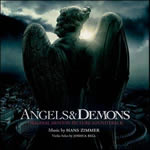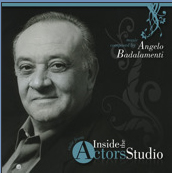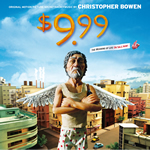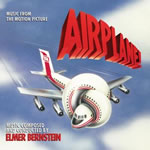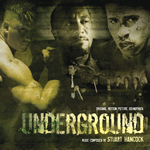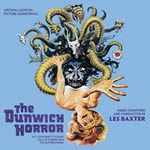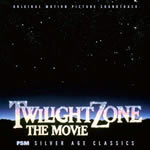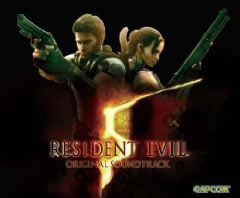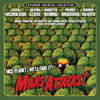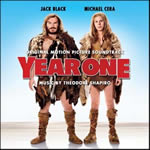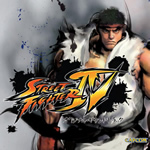 |
Soundtrax: Episode 2009-7
June 5th, 2009By Randall D. Larson
Scott Glasgow A Conversation with Scott Glasgow
Award winning composer, Scott Glasgow has been living and working in Hollywood since 2001 after moving from San Francisco where he earned his Masters from the San Francisco Conservatory of Music. In 2001, Scott was awarded the ASCAP fellowship to study film scoring at the Aspen Music Festival with John Corigliano and record with David Zinman's Conducting Orchestra. In 2002, Scott was also a finalist in the Turner Classic Film Scoring Contest. Since his arrival in Hollywood, Scott has worked as an assistant or score preparer for such composers as Christopher Young, Bruce Broughton, Elia Cmiral, Jeff Rona, Michael Levine, and Philip Giffin, and, since 2005 has steadily increased his exposure and reputation as a film composer in his own right, providing notable scores to films such as Chasing Ghosts, Bone Dry, Robotech: The Shadow Chronicles, and The Gene Generation (all of which have generated soundtrack albums on MovieScore Media, Intrada, and Varese Sarabande labels). I interviewed Scott a couple of weeks ago and we took a walk through his career to gather his thoughts and perspectives on his work in film music thus far.
Q: What drew you into films and film music as a profession?
Scott Glasgow: When I was young I was watching Back To The Future and Star Wars and all of these great movies, and the scores to those films really inspired me. Musically, I was into classical very early on and I think there just was a connection that was made through those two things.
Q: What kind of musical training did you have?
Scott Glasgow: I started studying classical guitar when I was 9 or 10 and by the time I went to high school I was studying the renaissance & baroque lute. From there I went to Cal State Northridge for my undergrad, and then after that I went to San Francisco Conservatory. When you’re a serious classical music student, you end up going to music festivals (Tanglewood, Aspen, etc.) instead of having a summer break. These festivals are some of the most wonderful experiences for a young musician. You get to meet and study with some of the best players in all the world and make friends with tons of great young musicians. To give you an idea, John Williams was at Aspen a few years ago and I hear Howard Shore also taught there one year. When I went to the Aspen Festival, I worked with John Corigliano; he had come to the San Francisco Conservatory a few times to worked with the grad students there, but at Aspen we spent a week really going through his film scores, Altered States and Revolution and Red Violin. My second time going to Aspen, I worked with Bruce Broughton.
Q: You were involved as assistant composer, score preparation, and/or orchestrator on films like The Grudge, Spider-Man 2, Wrong Turn, Ronin, and the like –what did these assignments do to prepare you for composing film music on your own?
Scott Glasgow: There are so many subtle things that you learn in those environments. It’s learning the process in a way that you can’t really get from a book or from a classroom. How you make a demo for a director who’s coming over, how you interact with agents and music editors, what is a music editor, what is a music supervisor and how does that affect your job, and what part do they play? You can’t learn that in the classroom – there’s too many little things that you pick up by just being in the room and feeling the interaction and just seeing how it works. For the first four years in Hollywood, I worked with Chris Young, Ed Shearmur, Elia Cmiral and a bunch of other composers.
Q: Chasing Ghosts gave you your first opportunity to score a full feature on your own. How did you get this assignment and how would you describe your intent for the music?
Scott Glasgow: That was from my friend, Kyle Jackson. I met him while he was still at USC and I scored a short film of his. A few years went by and then one day I got a call from Kyle saying that he was working on this full-length feature film and asked if I'd be interested in scoring it? The goal in Chasing Ghosts was to avoid the CSI kind of sound – at the same time it was a film noir. Chasing Ghosts was a great first time experience. We ended up going to Bratislava to record about 35 or 40 strings. I think it is some of my best music’s I have written so far. There’s a cue for an interrogation scene (with Danny Trejo) which reminds me of Górecki's 3rd Symphony but also very uniquely my own "voice" with a solo violin soaring way about the orchestra. This was a big leitmotif score –each character had a theme, so if you saw Madsen’s character with Busey’s character, those two themes were combined, or if you see Madsen with Shannyn Sossamon’s character, her and his theme were combined. It ended up always this interweaving of themes on who was on the screen and just pushing that. It's fairly uncommon to have a leitmotif scores with crime drama film, in fact, I can't think of another example of one.
Q: Robotech: The Shadow Chronicles certainly needed an expansive score, as both a large-scale science fiction animated film and one with a large following from its original series. What was your approach to scoring the film and how did you strive to make its futuristic environment and storyline come to life?
Scott Glasgow: Robotech was a really interesting project. I was just finishing Chasing Ghosts, and a friend of mine, Chase Masterson, an actress from Star Trek: Deep Space Nine, had introduced me to the production company. Once we sat down and started talking about the music for Robotech, we really thought about a leitmotif score. Robotech is a very dense universe with a lot of characters and themes, so I thought a leitmotive type score would really really fit this film. It was something that was brought up because of how well it worked in Star Wars. Really distictive themes for individual characters was something that Ulpio Minucci did not do [in the original TV scores]. Funny though, I do remember hearing something about him being told to do a Superman type main title. The first thing they said to me was that I had to do that title, there was the only thing that just had to happen (which is common with franchise type films, they want their theme for nostalgia purposes). There was a time when I rewrote the title with different chords and counterpoint, but I remember the night before the recording session I thought, forget it! I’m going back to Minucci exact notes, so I took out his score, copied it out, reorchestrated and pulled my changes out. I knew it was one of those things that needed to be as close as possible with some small updates (ie. no electronic tom sounds).
The funny thing about that is, when the fans heard it, the response was that it "sounded too much like Superman". I said, “well yeah, that’s because Ulpio's theme would have sounded like Superman too if he had a full orchestra to play his score!" Then of course I explained to the fans that I literally copied his score note-for-note but just had a larger orchestra. Funny, how they reacted though. As far as color in the orchestra goes, there was a very conscious effort there – the Invid, the old bad guys from the original series, were very close to nature and Earth, so the music for them was filled with ethnic instruments and ethnic percussion to really make it "earthy". Then we switched to the new bad guys, the Haydonites, who are more mechanical, we went back to a straight orchestra with electronics. When you’re listening to the score, if you hear ethnic instruments, that is accompanying the Invid, and when you hear something that’s very synthetic or military orchestra battle music, that represents The Haydonites. We also went for a lot of the big, classical orchestra, there’s a lot of Star Wars influence, there’s some Holst’s Planets type stuff, there’s a HoneggerSymphony No. 3 flavor in there, there’s a Wagner kind of section in there, there’s all kinds of things that influenced this score – but all in my own voice of course.
Christophe Beck, Marco Beltrami and
Scott GlasgowQ: How did you map out the score’s thematic unity and development, especially when you have to integrate and offset various characters’ themes?
Scott Glasgow: It’s not as mapped out as you might think! It’s really who’s on the screen and what’s going on. Occasionally I’ll bring a character’s theme in who’s not even on the screen yet, but he might be coming up, or there’s some sort of allusion to that person. There’s also a general Hero’s Theme. But it’s usually dictated by the screen, and that’s what makes the score so integrated with the film. I haven’t done a leitmotif score since these two films. I probably will do one again if I can find the right project for it.
Q: Hack! was a horror-comedy. How did this score come about – and how similar (or not) are horror and comedy to support musically?
Scott Glasgow: Two things happened with Hack! Kyle Jackson, the director of Chasing Ghosts, was an editor on Hack! So he basically stuck my music in and introduced me to the filmmakers. That has now led to three other films with these same people, and so it’s been one of those good relationships. But the main thing about Hack! is that it’s a parody, it’s a comedy but not a laughing-out-loud comedy. There’s silliness but it’s not Scary Movie silliness. It’s subtle stuff, so I really don’t consider that a comedy score. People who listen to the CD must listen to track 2 before they make up their minds what the score’s about! The first track is pretty gritty, horror music, but then 2 through 10 are much lighter, breezier music, but not comedy music. The film is a parody and so you’ve got The Shining and you’ve got Jaws and you’ve got The Ring, and so each time I came to those scenes, it was pretty much dictated that this is the music we’re going to be doing. The story just weaves in and out between all these film parodies; in fact there’s so many horror movies in this thing, I couldn’t recognize them all! I still tried to make it my own flavor, though – like on the Jaws theme, I just inverted it. I think it’s the only score of mine that I fully realized the way I wanted it, and it was mostly recorded live. On many of these films, I’m writing orchestral music but we don’t actually get an orchestra to record it, or we get maybe a partial orchestra. On Hack! we went to Europe and recorded the orchestra like it’s supposed to be done, and that’s what came out. In some ways I think it’s one of my best sounding scores, it breathes really well. We had 50-something strings, it was big, and I got to conduct, which hasn’t happened on a lot of my scores.
Q: Lo, which you’ve just finished, is also a mixture of comedy and horror – what was different about your approach to this score and what challenges did it pose?
Scott Glasgow: Lo is more of a quirky movie than a comedy. There’s funny stuff that goes on, but I just don’t know if it’s a comedy! I really think of Patriotville as my first comedy. With Lo, you’re in a quirky Danny Elfman zone, it’s not exactly scary but it’s not exactly funny, it’s kind of tongue-in-cheek. I did some unique things musically with this score, if you bend a nylon guitar string over the other string it creates this buzz tone, it almost sounds like a percussion instrument. It only works on classical guitar and it was that kind of strange, unique color I needed for this score (in the film it's the "hand motive", every time the character starts talking to his hand you will hear the percussive guitar effect). I also had this metal bar that was struck then immediately dipped into water to raise and lower the pitch in this funny sounding way. Lo’s a difficult movie to score in a way, there’s no sets, just black backgrounds, with one guy in the middle of a pentagram who has an overhead light on him. That's the whole movie basically. There’s some small "vignette scenes" that are in these high school musical sets painted by hand but those are small moments in the film. It is a very interesting and strange little film. Musically, I took it more seriously, and there are these wonderful violin solos by Mark Robertson. We also did a variation on Saint-Saëns’ Danse Macabre that was used under these "cafe' scenes. It's fun stuff. Dance Macabre is a really nice piece of music and Mark played wonderfully.
Q: Bone Dry was a very interesting score, ranging from very intricate sound-design textured material to full-blown symphonic grandeur – taking the sound of cactus needles, for instance, and adding that to the timbre of the score. Would you describe the genesis and development of this score and what elements of Brett Hart’s film inspired its sound and style?
Scott Glasgow: Without a doubt, the cactus was something that jumped out at me. Now, I do have to give credit to the fact that, as I mentioned earlier, I went to Aspen, and while I was there I saw this composer, Paul Rudy, do this bizarre piece for amplified cactus and electronics. I was in the audience and there were there people playing cactus, all miked and set to these delays, and it was kind of a crazy piece. I knew that someday I wanted to do that, and once I saw the footage from Bone Dry I thought, this is it! I went out and bought a big, fat barrel cactus and sat there in my studio plucking each spine. I had a black sharpie and I’d say, “oh this one’s really nice and thunky,” and I’d color in a little black. So I recorded the ones I liked, brought it into my sampler, and mapped it out for my keyboard. So I’d got some that are just plunks, and I’ve got some that are tuned to a piano, so I’ve got a cactus piano, if you will. And then I added a delay to it and processed it a little bit. I also used these rebound knives, as I call them. I literally went into my kitchen and took out every knife I had. If you hold the knive against the edge of a table, it goes “bwoong-g-g-g” – it kind of snaps and rebounds, and if you pull the knife in as it’s rebounding, it speeds up, or if you pull the knife out, it slows down. So I created all these kind of crazy sound effects and combined them in the score, and it just worked with the desert, I think. And then, of course, when we get to the end we get the big Prague Philharmonic piece. Brett was really big on the Chasing Ghosts score, that was his reason for hiring me, particularly the last track of that score, called “Karis.” It’s a very short cue and my challenge in Bone Dry was this: “I want you to take this Karis piece and I want you to stretch it out over ten minutes!” It was a little scary at first to sit down and try and do that. I knew “Karis” had it, I just didn’t realize it had as much as it needed, and honestly, I don’t think they sound alike, now, but he wanted the feeling of that building-mountain, as I call it, the dense polyphony of sound that builds up.
Q: Few listeners may actually notice the musical texture – people may not realize that they are listening to cacti – but it’s an organic sensation that worked subliminally to great effect, and then to come out of it into this harmonic musical epiphany is really a journey that the audience is able to go through.
Scott Glasgow: You get into that film, and you don’t know where you’re going, but at the end there’s this big, cathartic moment. There was no money for an orchestra at that time, and I talked to Brett and said, “if I do this with samples it’s just not going to connect. We need to find the money to get these fifteen minutes recorded, because it’s going to have so much more power and contrast.” That ending, with Lance and that whole reveal, is just a good turn around, and I’m glad that they trusted me and found the money to do it. It made a huge difference.
Q: In the earlier, bleaker portion of the score, what was your technique in integrating the musical sound design, and how challenging was that for you to accomplish while keeping the score unified and progressive and with its own dramatic arc?
Scott Glasgow: It was just using delay textures and bleak abstractions with those sounds. My concern actually was that the sound designers were going to get too heavy, but lucky they stayed away from what I was doing and I stayed away from what they were doing. I was plucking at cactus and there was no one on the screen plucking at cactus so that was helpful! But I think I kept it sparse and kept it moving.
Q: Toxic was a really stylish action thriller with a lot of songs, between which your score served to accentuate and express the underlying drama and interaction. What were your initial inclinations as to what the score needed to do in this film, and how did you end up accomplishing that?
Scott Glasgow: Some of those songs are mine – they actually had me doing rap at one point! I was, like, “you’re serious, right?” But we were just trying to make something happen. The second club scene, that’s all me; we were going for something club like but surreal. Anytime you hear groove type score, where it’s not actually someone singing, that’s me. There are about ten or eleven songs – I also got wrangled into being music supervisor on that project, so I know all of the bands and I had to chase everyone down for their licenses and that kind of thing. But coming into the score, I had one little theme, flute and piano, and that’s pretty much what I used for the whole movie. I whittled it down and I thought I’m just going to make this as direct and as simple as possible. The movie is complicated because it deals with a split personality, and because of that the film starts one way and ends another way. It starts kind of hip and kind of Tony Scott and ends M. Night Shyamalan. You’re just confused as to how you got there. Musically I did a similar thing. In some places I tried to act like glue, and in other places I did more of a groove type of score. I brought in some saxophone and some other stuff to try to create a hip type of score. That was a complicated project, there were a lot of changes going on in the film.
Melissa Kaplan Q: There’s a neat moment in the film where you’ve got Dominique Swain on the roof and she’s contemplating, and then you’ve got Melissa Kaplan’s voice, just for a moment, which really kind of eloquently emphasized what she was going through right then.
Scott Glasgow: Right. That’s actually a sample from Robotech. Melissa did so much work for me on Robotech and it was just an unused vocal thing. I paid her for the piece since I was using it for a different movie. I had used it in Bone Dry also – there’s a moment where you’ll hear just a faint voice, and that’s almost always Melissa, and they’re usually remnants from another film. But one poignant moment makes all the difference. I don’t need to hire her for a whole score when I just need that one little thing.
Q: And yet that moment had such an effect on the overall experience. You sync with the emotional journey that the character’s going through.
Scott Glasgow: Something else funny about that specific scene, when she falls off the roof and hits the ground and the car speeds out of the way and hits a bum, which is C. Thomas Howell, by the way – that’s my car. They borrowed my old car.
Q: So that makes you a triple-hyphenate, you’re a composer-music supervisor-and-stunt equipment provider!
Scott Glasgow: That’s true! I’m actually in the film, by the way, it’s a really horrible moment. The director had stuck me with the Playmate of the Millennium, and he told her to flirt with me. So I’m actually in the film in one of the club scenes, for just a second.
Q: Like Bone Dry, The Gene Generation also needed to musically exemplify an environment – the cybertechno/fusion/martial arts/Blade Runner-ish future of Pearry Teo’s vision. When you first sat down to spot the film and talk to Teo about it, what elements did you decide needed to be central to the music, and how did the score develop into what it is now?
Scott Glasgow: I found that film on MySpace. I just wrote the director and said, do you have a composer, and they did. They had this guy in Germany who is in VNV Nation, but he had never done a score in the traditional sense before, he was an electronica guy. And then suddenly the conversation opened to me, and the producers started talking about, maybe we should get a film composer to score this film. Also, the director’s a huge anime fan, so he just loved the idea of getting the Robotech composer. At that time I had a lot of buzz going on, I had interviews and the Robotech CD came out and there was a lot of stuff happening around that film. Again, the buzz part of it is really an important aspect of this industry. So I met with them literally the second or third day after I contacted them on MySpace. Then, it just so happened that the Society of Composers and Lyricists was doing a presentation of Karen Han performing the erhu. I called up the SCL and said I need to get this producer and director in with me, I know this is a composer event, but I really would appreciate it if you would allow me to bring these two people in. So I brought them and also Lisa Fowle, the sound designer, with me to see this presentation of Karen Han, because I remember saying to them, “I’ve seen very short clips of this film, but everything you’re telling me, I’ve got to have an erhu player.” Pearry is a Chinese director so he knew exactly what the erhu was, but seeing that presentation solidified that idea.
We wound up switching to zhonghu for more of a reedier, cello sound. And then I knew I wanted to do something that was just a bunch of ethnic players in a room. I didn’t want to try to do a huge orchestral score without the resources to pull that off. You don’t want to write huge orchestral music when you don’t have an orchestra. As I started to collect players I started to whittle the sound down. I was planning to do a whole bunch of pipa writing, which is a Chinese guitar, and honestly it just never really worked. Same with guzheng, a Chinese koto. All that plucky, guitary stuff, it just never felt right with the film. There are a few little bits, had some samples I did incorporate, but it was providing a flavor. It was like the Melissa Kaplan voice in Toxic. Little flavors, a little salt here and there. But it wasn’t a featured player anymore. I knew the zhonghu was going to be the main thing, that and the viola da gamba. I had originally set out to do not a leitmotif score but I knew the Bai Ling character was going to be the zhonghu and that the Alex Newman character was going to get the viola da gamba. Granted they’re both low cello type sounds, but they’re so different, I thought it was going to work. Ultimately the Alex character, his theme was just downplayed. You hear a bit of it at the end [spoiler!] when he dies, you do hear her theme, and then there’s this kind of big orchestra thing and then it goes back to her theme. His theme did still come up, but it just was never built to the point where you could sing it, as it was intended.
The only other thing there was that we’ve got these enormous cityscape scenes and I knew I had to create this giant, gothic choir and orchestra sound. There had been talk about doing a Blade Runner type thing originally, completely go synths, along with the erhu. But I don’t think that works now as much. It works for Vangelis, he’s got a specific thing he does, but when I forayed into it, it just wasn’t working, so I did by hybrid version.
Q: You worked with Melissa R. Kaplan again on this score. How would you describe your use of her voice as an instrumental element of your musical palette?
Scott Glasgow: I do treat it like an instrument. It’s a color, and with Melissa and the way that she does what she does, I don’t really dictate too much to her. I’ll give her kind of a guideline and let her change it. The “Aereann Flyer” track, which is the second track on the album, I didn’t create those harmonies for her. I created a melody I gave her the whole chords that she was singing over, and I knew where I wanted her to go, but then she created the other harmonies underneath it. She brings so much to the music. It’s almost impossible to tell her or even any ethnic instrument, “here are the notes I want you to play.” You kind of have to give them a blueprint of notes and say “now do something that you do” and they add all this other stuff, naturally.
Q: Does she come in and record for you or does she do that in her own studio and then provide the recording to you?
Scott Glasgow: She’s a real private person! She records in her own studio. I worked with her back when I worked with Ed Shearmur, that’s when I met her. She sang on K-PAX and probably a dozen other things, she sang on Riddick for Graeme Revell, so she’s been around for a while. But I sent her tracks and she kind of does it on her own, and then she sends me back a ton of stuff. I’m always overwhelmed with the stuff and it’s all wonderful, and I sit there and try to figure out a way to make something happen and then I send it back to her and get her opinion on what I did with what she gave me, and then a lot of times she’ll rethink stuff. Gene Generation was done over a year ago, and the CD came out last month; but two months before that I heard from Melissa that she was not happy with one of the vocal tracks she had recorded, so she re-sang it for the CD. She’s a very proud artist and a tremendous talent.
Gene Pearry and
Scott GlasgowQ: You’ve now done two real comedies in a row – Patriotville, Hollywood And Wine. In general, what kind of music do contemporary comedies like these require, and how have you put your personal stamp on each of these very different film scores?
Scott Glasgow: For me, Patriotville is probably the beginning of what I will call my comedy phase. It’s been a new adventure. I’m so at home with horror and sci-fi and I can say that if my entire career was in sci-fi I’d probably be really happy. I grew up reading sci-fi and watching sci-fi movies and listening to sci-fi scores, so sci-fi is a huge, for me, I could probably live there forever! But comedy’s been a new thing and it’s kind of a challenge. I’m in the middle of Hollywood And Wine right now, that’s the David Spade/Chris Kattan/Saturday Night Live crew... but some of the jokes simply don’t work. You watch the scene, you know it should be funny, but it’s just not funny. And you add the score, and suddenly it’s funny. That’s unique, that’s different, and that’s what makes Lo and Hack! not really comedy, because they don’t have that kind of challenge. It’s not a ba-doom tish! kind of a challenge: here’s a joke! Patriotville is about Indians, and I took that little rimshot idea and I did it with ethnic Indian instruments, so there’s a whole moment where these Indians are talking to the mayor and the city council about bringing in their Indian casino, and the whole ba-doom tish! thing is played on Indian instruments. It’s really interesting how that worked out.
I’m finding comedy more of a challenge than I expected, I figured it would be pizzicatos and little bassoons and cute little stuff. Unless of course you do the Bernstein thing, but that’s not what these are about, they’re very much your standard comedy. Another challenge is finding your voice in comedy.
Patriotville is a little more like one of those Michael J. Fox/Doc Hollywood heartwarming type films, but Hollywood And Wine is a straight up comedy, there’s not one dramatic moment. A lot of comedies, you know, will go through their jokes, and they get to a moment where something bad happens, like in Dodgeball, it only lasts for about a minute and then you’re back into the comedy. Hollywood And Wine doesn’t really have that, it’s just a straight up comedy from beginning to end. It’s directed by Kevin Farley, who’s Chris Farley’s brother, so it’s home for SNL folks.Q: You mentioned that some of the jokes needed music to have them work. What did you do to enhance the laughability of the film through your music?
Scott Glasgow: Here’s an example. Norm MacDonald plays a porn producer and he’s always saying these vile things – just the worse possible things you can think of. Now if I don’t play any music under it, you’re just thinking, “eeww, this guy is kind of creepy.” It’s over the top of what’s disgusting. But as soon as you start adding pizzicato strings, suddenly you go, “oooh, I get it, it’s just silly.” I could have played it seriously and that probably would have made him into a really creepy character, but the music is the only thing that’s making it funny instead.
Q: I’ve often considered horror and comedy flip sides of the same coin, it all has to do with set up, with timing, and with the punch, and on one side the punch is an axe going through the head and on the other side it’s a pratfall. The build-up to that is what music does so well.
Scott Glasgow: Comedy for me is a much tougher challenge – and it’s a lot more notes. I have no idea how Bruce Broughton survived all that on Tiny Toon Adventures, or, say Carl Stalling – that kind of stuff
is so many notes and it is a lot of work. One 2-minute scene can take two or three days of hard work. I’m able to quickly work. I was doing some stuff for Necromentia , I’m no longer on that film, but I was doing some tracks for that the other day, and one day I think I did eight minutes of music in one day – and that’s a lot. Most composers do about 3-minutes a day, that’s the average. With the comedy stuff, I’m much slower. It takes much more time.I’ve also found comedy to be more limiting than anything – the directors and producers are really strong about the temp scores. There’s a lot less experimentation in comedy. They fall in love with the temp music, and they say “listen to how that little thing hits there,” and I say “well, that’s total serendipity, you just threw a temp track in and it just happened to hit there, and what if I moved it?” and there’s this whole kind of reaction to it being moved. There’s actually a cue in Patriotville that I was very happy with, it’s this very sweet, charming cue I wrote for a “Raindrops Keep Falling On My Head” moment, where Justin Long is riding with Emmanuelle Chriqui on his bike and there’s a cute lovers thing kind of happening, and I wrote this lilting waltz thing with the guitar, and they just wanted the temp. I did my best to sell it and now I’ve got to go back and change it. It’s very discouraging sometimes on a creative level to be told, “this is what you need to do.” I’ve always thought it was like them going to an actor and saying, “okay we couldn’t hire Robert DeNiro but we did get him to act your part and here’s a video tape of Robert DeNiro acting your part. Please do it exactly like this.” That’s, for me, the perfect analogy. All it is, is that they’ve watched it five billion times with that temp, and they just have to be able to let go and sometimes they just can’t.
Q: Working on Hollywood And Wine with Matt Berman and Kevin Farley, what kind of input did they have for you about what they wanted for music?Scott Glasgow: They are both new filmmakers, so they had very little. They had not worked with a composer before, so the only thing they talked to me about were the songs. Some of the scenes were temped with like metal music and it really doesn’t work. There’s a bus chase sequence where these mob guys are chasing Chris Kattan on this bus that Vivica Fox is driving, and it’s kind of a crazy scene, and there’s these heavy metal solos going on, and they just don’t work, dramatically. Patriotville is what got them most interested in having me score their film. And, keep in mind, while Hollywood And Wine is indeed being directed by those guys, it’s also being produced by the Hack! guys and the Bridge To Nowhere guys. So it’s all about making these connections. I would say that most composers, when you look at their films, somebody on that project was on one of their other projects.
Q: What’s been most challenging thus far for you as a film composer?
Scott Glasgow: It’s always obvious, it’s always the budget. We’re always trying to make something happen, and I personally, when I write an orchestral piece I want it to be played by an orchestra, not by samples. More and more each day it gets closer and closer to the point where a live orchestra is becoming less and less of a reality, except for the top ten percent. So there’s a question of maybe I shouldn’t write orchestral music, maybe I should write hybrid music from the start. I think that’s the biggest challenge. I’m on my eleventh feature with Hollywood And Wine and I’m still dealing with the idea of writing orchestral music not being realized by an orchestra. Independent filmmaking is very difficult. I would love to do some TV actually, just because it’s fast and quick and you know you’re not going to have an orchestra; there’s only a few that do. And of course, move into doing bigger features where the budgets get a little better, too. But I know, because I was working for those guys that were working on those big films, even at the top it can be a challenge.
Q: Well, I’ll say this, eleven scores in four or five years is pretty impressive, and the fact that they’re all very different. You’ve had the opportunity to not get pigeon holed and do different kinds of things.
Scott Glasgow: That’s what I hope to continue. Now that I’m going into comedy, I don’t know what’s next. Maybe a nice big fantasy might be kind of fun.
For more information on Scott Glasgow, please see his web site at: www.scottglasgowmusic.com
New Soundtrax in Review
J. J. Abram’s large scale reboot of the Star Trek franchise opened to mix but mostly favorable views last month, and Michael Giacchino’s score, released digitally and on CD by Varese Sarabande, creates a new thematic structure on which the franchise comfortably rests. Giacchino’s Star Trek score opens somberly, with a slow intonation of his main theme sounding dolefully from French horn for the pre-title credits. His theme is simple and straightforward, lacking the complexity of countermelodies, but it is elegant and honorable, an effective tone poem for the original Enterprise crew as we meet them in their youth as they first come together as a team fresh out of Academy. Giacchino’s theme quickly becomes bombastically energized as the film swoops into action territory, and it becomes both a motif embodying the bold heroism of Kirk and Spock and the others as well as a dazzling and brash action piece, threading through all manner of rhythmic dissonance and raging orchestration. The theme is masterfully developed in “Hella Bar Talk,” and especially in “Enterprising Young Men,” in which we, and the characters, first see the newly-built starship that is to be their home and workplace as they boldly go, produced an especially potent version of the main theme; once almost expects – and almost wishes for – Giacchino to take a phrase from Jerry Goldsmith’s Star Trek: TMP/TNG theme to tie this scene in with that from TMP and graft this movie more solidly onto the music of previous (albeit later, in the correct timeline) entries in the franchise. But Giacchino’s music is solid and builds to an effective dramatic peak. The climax of “Does It Still McFly?” supplants a dissonant pattern onto the theme as it elevates into a growling and ultimately sinewy dissolution. A soft love theme for violins, emboldened by brass, is introduced in “Labor of Love,” which will flow into some of the later scenes as Uhura becomes a central romantic figure in the storyline. An eloquent theme for erhu is introduced in “That New Car Smell” (blissfully performed by virtuoso Karen Han) which lends a pleasing sonority nicely in contrast with the pervasive strings and brass. Action-heavy cues like “Nice to Meld You” are effectively rhythmic and powerful, built around melody and tonality, and with a tremendously powerful forward motion to them. The Romulan villain, the rather averagely tattooed skinhead Nero, is provided with a choral motif that suggests his deep-seeded malice and madness, the choir intones and sings with controlled hysteria as strings flail and horns blare relentlessly. Giacchino’s orchestration in consistently interesting and effectual, building powerful and emotional measures out of his themes and contrasting elements that built them up into a raging torrent of sparkling symphonics. While Goldsmith is avoided, Giacchino does beautifully segue into a vast orchestral arrangement of the Alexander Courage theme for the original TV series at the end of the film, which subsequently interacts with Giacchino’s theme throughout the End Credits. One still longs for a reference to Goldsmith, but the logistical use of the Courage theme provides a compelling continuity between the end of this film and the beginning of the television series, heralding the beginning of its “5-year mission” and looking ahead to everywhere the Enterprise and its crew have gone. (Incidentally, the soundtrack CD contains music from the first and last parts of the film only; there remain some splendid bits of score from the central part of the film which for whatever reason have not been included on the CD.)
A second helping of Giacchino is had with the release of his score for the latest Disney animated feature, Up, issued last week on Walt Disney Records as a digital download and available on iTunes. The music is a varied mixture of sympathetic poignancy and large, symphonic dramatics in a pleasing 23-track offering. The story tells of Carl Fredrickson, an elderly widower, who ties thousands of balloons to his house in order to make an aerial journey to meet his hero, aeronaut Charles Muntz, taking an inadvertent stowaway, boy scout Russell, along the way. The score opens with a nostalgic motif associated with Muntz, who we meet via an old newsreel describing his exploits. His theme will color much of the score in varied patterns as the story develops; but the heart of the score is in the poignant piano theme is associated with the character of Ellie, Carl’s long departed wife who is still very much a part of him; thus it’s very much a part of the score, from its simple, solo piano introduction to its soaring variant from full orchestra. Additional themes are introduced, developed, and intertwined around these as the story goes on; the score is very much an example of leitmotif interaction; hyper dramatic when it needs to be but also exquisitely passionate, as the film for all of its fantastical fantasy, is very much a heartfelt human drama at its core. Giacchino does a fine job supporting its nuances and the score is richly conveyed, extremely potent, and just a lot of fun on CD. It’s as energetic as Star Trek in many places, but built around a sensibility of innocence and trueness of heart that is very appropriate to the wistful love story that informs Carl and his adventures in the sky. The digital release includes three tracks from Skywalker sound emphasizing their sound design in a trio of notable scenes, a 7-minute Mp3 video documentary about the music from the film, interviewing Giacchino and others, and a 25-page digital booklet, although aside from credits and track listing all it contains are color photos from the movie and b&w pix from the scoring session.
Hans Zimmer’s score for Angels & Demons, Ron Howard film based on Dan Brown’s 2000 novel and featuring characters made popular in Howard’s 2006 film of Brown’s 2003 novel, The DaVinci Code (follow?) has been released by Sony Classical. Zimmer scored the 2006 movie so it makes sense to carry the same sensibility through to the new film, although he enlisted aid from collaborators Atli Övarsson and Lorne Balfe; Nick Glennie-Smith conducted the orchestra and Joshua Bell provides violin solos. The score opens with a fairly busy but innocuous choral piece, “160 BPM,” but soon gets into thematic integration with the former film in “God Partical,” reprising the moving rhythmic motif from DaVinci Code’s “Chevaliers de Sangreal, with Bell’s violin taking the sonorous melody line; but the cue soon drifts info chaotic choral ambience and atmosphere. Angels & Demons is a far darker score than DaVinci Code, perhaps as it deals more directly with issues of science versus religion, Illuminati versus Vatican than the comparatively more implicit moral struggle in DaVinci Code. In fact, the 12:27-minute cue, “Science and Religion,” explicitly paints a progressive atmosphere portraying the ongoing adversarial relationship between science and religion, as embodied in this story. It’s a haunting track that wafts like heavy fog across the soundscape, chorale intonations melding with strings to create ongoing lumbering waves of sonority. This approach sets the tone for most of Angels & Demons. The use of choral of course suggests the angelic portion of the title, and the score’s tone, as is much of the picture, is one of darkness and menace; but Zimmer and crew don’t provide any demon music – the tone is choir and violin atmospheres from start to finish, although this is hardly angelic music. The score consists of thickly laden choral and violin atmospheres, sustained measures, and floating ambiance, but neither angel nor demon is conjured up in Zimmer’s musical phrases or intonations. There is no central thematic grounding in the music, outside of the brief reprise of “Chevaliers de Sangreal,” heard in the first part of “God Partical” and in the closing track, “503” (where it is played over a fast-paced but muted keyboard riff, not unlike something by Phillip Glass). Lack of a strong central theme leaves the score to drift, but this may well have been the intention, allowing the music to flounder a bit, until reigned back in by the “Chevaliers de Sangreal” motif that occupies the whole of “503.” This last track is a brilliant culmination of the DaVinci Code/Angels & Demons tonality, a closing statement that concludes if not resolves the composition. The theme is really more of a progressive melodic rhythm than a real melody; its very melodic vagueness gives it a strong sense of power and it conveys a feeling of spiritual entities purposefully at work – and gives a sense of closure to the story as it plays out, and leaves that whole question of science versus religion unresolved and unrevealed.
Looking back a couple of years, after running my interview with Simon Boswell in my last column I wanted to revisit his score to Tin Man, a 2-part Sci-Fi channel miniseries from 2007 whose score was released on CD by Varese Sarabande. A vibrant re-imagining of L. Frank Baum, Tin Man offers an alternate telling of The Wizard of Oz in which we follow a girl named DG (the captivating Zooey Deschanel) into the world of Oz some 500 years after Dorothy’s original visit, and for it Boswell has provided one of his most vivid and expressive scores. Opening with “Central City,” a sweeping, bold melody for French horn and other brasses with a flourishing countermelody from violins and a constantly chugging rhythm, this is a magnificent theme that is just marvelous, energetic, and melodically very interesting, yet fraught with danger, as is the city that is at the heart of the Outer Zone (OZ). In “Storm Coming,” in which DG is first seen taken back to OZ from her small town home, Boswell’s Central City Theme blisters for full orchestra amidst a progressive, windblown cadence of choir and rolling percussion. The theme appears in various other guises; as a furtive, menacing measure in “Maze” before opening into a pervasive martial rhythm dominated by string figures and heavy brass chords; “Leaving Central City” paints a huge tapestry of musical sound, dramatic and epic on sonority. In contrast, Boswell’s “Theme from Tin Man” is a yearning melody for strings, captivating in its tangible sense of desire; the music is intensely and emotively romantic, and an effective contrast to the film’s fairly predominant darkness. The motif resounds with glorious fulfillment in “Papay Fields,” wherein DG’s latent magical abilities are restored, and in the second half of “The Seeker,” in which burbling electronica pads open into a clear-toned statement of the theme from winds and strings; and at the climax of “Doll Magic,” where it swells rapturously; and in the finale, “New Dawn In The O.Z.” where it provides a final, triumphal summation of the triumph of goodness in the Outer Zone. These two themes are most central to the score, but other motifs appear during the characters’ journey and set their own statement upon the score’s own progressive journey. Haunting chorale motifs inhabit “Milltown Erased,” an OZ town that succumbs to the cruelty of the wicked enchantress Azkadellia. “Mirror Vision” is a mesmerizing musical calligraphy of swirling synths and echoing tonalities out of which the violin-driven cadence of the Central City theme emerges with relentless intent. Boswell’s percussion work provides a subtle yet evocative texture to this cue. “The Emerald” also exudes with vaporous, reverbed flutes and synths, and rustling percussions. “The Lake” contains some marvelous violin soloing over keyboard, flutes and muted percussion. “Diner” is a tuneful piece, almost something of a scherzo, a set piece cue with a bouncy, lyrical ambiance that is quite likable. The score erupts into a bombastic frenzy with “Transformation,” and continues in a heroic mode through into the resolute finale, “New Dawn in the O.Z.” Tin Man is a very fine score, rich in melody and vast orchestral tone, nicely developed and resolved.
Angelo Badalamenti has rearranged his music from Inside the Actor’s Studio, the Bravo TV interview series hosted by James Lipton, into a 9-minute suite which is now available for download on iTunes. The composer became affiliated with the cable television show in 1994 when Lipton, a fellow Academy Board member with Badalamenti, needed title, credits, and bumper music for his new show. Fifteen seasons later, Badalamenti’s elegant music is as much a part of the Emmy-nominated show as is Lipton’s perceptive questions and the rapt attention of his student audiences. The richness of the music, the eloquent honor with which it conveys itself to the notion of the art of performance, makes for a quietly stirring and pervasive performance. The orchestral suite developed for this recording is nicely and evocatively arranged, progressing naturally into an extended variant of his short cues for the show, which culminates in a very warm and satisfying denouement. Lipton provides an informative introduction to the suite, but it’s posted as an iTunes review (and cannot be printed except via a screen grab pasted into a graphics program) rather than being downloadable as in the manner of a digital album booklet.
Annie Award nominated stop-motion feature $9.99, directed by Tatia Rosenthal, features a poetic and slightly minimalist score composed by Christopher Bowen, whose previous works include the equally beautiful score for the acclaimed Shira Geffen/Etgar Keret drama Jellyfish. The soundtrack has been released digitally only by MovieScore Media – coincidentally for the same price as the film’s title. The 2008 film follows a number of individuals who live in a Sydney apartment complex looking for meaning in their lives. With a budget that may also reflect the film’s title, Bowen says that a captivating score doesn’t necessarily have to be big and sweeping – his score for $9.99 is small-scale with an emphasis on piano, a string quartet, and electronics. The score is a pleasing array of melodic interludes and tuneful rhythms performed by this small ensemble, providing not so much dramatic accompaniment or counterpoint, but a gentle current of attractive sound that fits the tone of the movie. The music ranges from very intriguing opening world-beat rhythm of “The Sunshine Coast” and persuasive tracks like the piano and guitar counterpoint of “The Truffle Shaves,” the keyboard and guitar interaction of “Like Smoking Chewing Gum,” the intricate plucking and percussion amidst rising strings of “Pigs Love Parks,” and the pleasurable joy of “Swim Like A Dolphin” (parts of which are carried into the raucous closing track, “Happiness,” which features dolphin sounds amidst its sound design), to somewhat more monotonous material like “The Meaning of Life,” “Zak’s Bedtime/More Wonderful Books,” and “”I Want To See You Fly” that are rather tedious for listening away from the film; but it’s a likable score with a pleasing acoustic sound design; the small ensemble proffers an attractive accompaniment for this intimate and introspective film.
La-La-Land Records’ release of Elmer Bernstein’s long sought-after score for Airplane!, the zany1980 comedy that set the style for farcical, satirical comedies for decades to come, sold out of its 3000-unit run shortly after release, which shows how sought after this score was. The 37-track album, which includes 13 bonus tracks of source music and alternate versions as well as recorded tracks that were not used in the final film, is the first legit release of this landmark score. An LP was released along with the film but it contained songs and dialog extracts. A bootleg CD came out in 2000 containing 16 tracks plus three suites from Bernstein’s score for Little Women (1978) – this new CD is not only legal but contains essentially the full score in sequence, plus the bonus tracks. Bernstein’s music for Airplane! is his best comedy score, but it does not consist of comedy music (except in one comic version of the “From Here to There” track where the choir intones madly until they are out of breath and register). Bernstein was straight man to the Zucker-Abrams-Zucker writer/director team, and he scored this film as seriously as if he were composing for a tragic disaster movie. His serious energy gave the film the perfect grounding in reality and straightforwardness that made its riotous comedy work even better. From his energetic main theme, which would not have been out of place in any disaster movie of the 50s of 60s, to his lilting love theme, which also has a classic 50s style to it, and various subordinate themes and motifs, Airplane! is a masterful score in every respect and it’s extremely satisfying to hear it in such a finely preserved album. (There’s a short hidden track at the end also, from a source cue involving one of the news reports of the stricken plane). The album includes a 20-page booklet with illuminating notes from soundtrack.net’s Dan Goldwasser, who also produced, which are very thorough and informative, with a good mix of comments from a variety of people involved in the production, and a fine selection of memorable quotes from the film added throughout also.
Stuart Hancock’s score for Chee Keong Cheung’s directorial debut, Underground, released digitally and on CD by MovieScore Media on June 9th, opens with a persuasive rhythm track that sets an appropriate tone for this gritty urban drama about an underground fight tournament in London. The score is a hybrid action score built around a single theme, but it does a good job at propelling the action and providing an expressive rhythm-based propulsion that gives the film what it needs (“Training Montage,” as might be expected, is one of the score’s standout cues). Tracks like “The Weapons Fight” generate a potent hybrid riff, embellished by strident string bowing that gives the cue a neat energy that is quite likable and provides for an effective musical texture. A contrasting introspective cue, “Round Three,” provides an eloquent reflectiveness through strings, synth, and rolling percussion. The numerous fight scenes (“Mark v Leon,” “Cage Fight,” “Last Man Standing”) are scored with predominant rhythm riffing, allowing the violence of the fighting to provide its own counterpoint, while the music, especially with sampled chorus of “The Cage Fight” providing an almost spiritual perspective on the visual action, wafting high above. Hancock, who’s composed numerous series for British TV including episodes of Nick Park’s Creature Comforts, has also scored Cheung’s second film, Bodyguard: A New Beginning, which MSM is slated to release on June 9th as well.
Also released by La-La Land is an expanded release of the classic 1969 Les Baxter horror score, The Dunwich Horror, loosely based on the H. P. Lovecraft novelette. Baxter’s approach was very modernistic, borrowing heavily from pop and rock music in his instrumental texture and beat. He gave the score a melodic pop-baroque sensibility, emphasizing synth, flutes, brass and other instruments to envelope the film in a strident, dirge-like melody that was equally pop-influenced as it was wriggling with textures of ancient history. Despite its dominant electronic and rock overtones, Baxter incorporated some significant orchestral textures, including a soft woodwind motif that offered a respite from the dominant horror motifs. The score was issued on LP by AIP Records in 1980, and reissued on LP by Varese Sarabande in 1979. This is its first CD release, although of course bootlegs have abounded. The score is a favorite of mine as both a Baxter fan and a Lovecraft afficianado; while the film was a far cry from authentic HPL, it was a likable horror effort and Baxter gave it a tremendously potent score. His main synth theme rings with a diabolical clarity whose cadence carries doom along with each beat; it is given numerous variations and textures throughout the score’s orchestration, and is a very welcome release. The well-illustrated 12-page booklet contains a thorough analysis of the film and its music by Jeff Bond.
This has been a great month for archival releases. Another very notable release is FSM’s splendid restoration of Jerry Goldsmith’s music from Twilight Zone: The Movie. Previously available as an import CD from Japan, which replicated the eight tracks on the original 1983 LP soundtrack from Warner Bros., FSM expands the release to 26 tracks and proffers the complete, uncut score in sequence. Bracketed by Goldsmith’s expansive interpretation of Marius Constant’s original 2nd season theme from the original Twilight Zone TV series, the album offers the music from each of the anthology film’s four segments, including a healthy dose of additional music, songs, and alternate tracks. Because each of the four segments was made by a different director and told unrelated stories, Goldsmith treated them like separate movies and scored them independently of one another. Thus we essentially have four different film scores here. John Landis’ “Time Out” segment, re-edited from its original concept due to the tragic death of actor Vic Morrow and two child actors during filming, had an edgy score full of tension, the music rough and spiteful like the bigoted protagonist of the story, while the use of martial percussion emphasizes the predominant militaristic notion of the tale. Its opposite is found in the poignant and soaringly lyrical music for the Steven Spielberg-directed “Kick the Can,” about residents of an old folks home who discover a fountain of youth. Goldsmith’s lilting melodies, heard most often from strings, harp, and woodwinds, are also performed on clear-toned synths, which mixes the warmth of the melody with the strident, eerie tonality of the electronics, accentuating the episode’s enchanting and wistful fantasy. The Joe Dante segment, a remake of the old series’ “It’s A Good Life,” is a permeated with a mélange of flutes, strings, and electronics that emphasizes the wrongness of the comfortable family encountered by visiting nurse Kathleen Quinlan. The score also features slapstick musical effects from cowbells, antique car horn, and slide whistles to enhance the manic, 3-D cartoonlike imagery of the episode’s climax. Powerful, thunderous brass and string writing nourished George Miller’s “Nightmare at 20,000 Feet” segment, also a remake of the famous original TZ episode about an acrophobic man on an airplane flight who spies a destructive gremlin on the plane’s wing. As the story plays out, the music delineates the man’s growing panic and breakdown. A motif comprised of rapidly fiddled tritones, reminiscent of Saint-Saëns’ Danse Macabre and Goldsmith’s own 1961 TZ episode, “The Invaders,” characterize the demonic gremlin throughout the episode. The release includes a 28-page booklet with thorough background notes and track-by-track commentary by Jeff Bond and Mike Matessino, this is an outstanding restoration of one of Goldsmith’s (and the 1980s) best scores.
Sumthing Else Music Works, Inc., through its licensing relationship with Capcom®, has issued a 3-CD soundtrack set for the video game, Resident Evil 5,featuring the original music score from the new generation of the fear-inducing video game series. The physical CD is distributed by Sumthing Distribution and the digital release is available on Sumthing Digital (www.sumthingdigital.com) and iTunes®. The work of three composers, Kota Suzuki, Hideki Okugawa, and Akihiko Narita (all three of whom contribute notes to the 6-page cd booklet), Resident Evil 5 is a game score which means it features lots of ongoing percussive riffing, atmospheric pads and drones, and synth-dominated sound design; much of this is fairly monotonous and noisy when divorced from the gameplay or game cinematics, and three discs is a bit much unless you’re really a fan of all of the game’s music. Lead composer Kota Suzuki said of the score: “As the look of the game has changed from the previous series, I spent many hours trying to figure out how to approach it with music. We tend to relate horror with darkness, but this time the game takes place in Africa with a blazing hot sun. I contemplated on how I could stir the player's emotion by music embodying two opposite elements? After much trial and error, the director came up with a key phrase ‘panic horror.’ And from there, I put my focus on panic-stricken music for the players.” The score does feature some intriguing orchestration, including a provocative female voice heard in the “Opening,” and has a number of compelling cues, such as the clacky, percussive action pad, “Pursuer and the Pursued” and the reflective ambience, “Result,” on disc 1, the eloquent melodic cue, “Trust,” on disc 2, and the propulsive chase riff “Majini IX – in flames” on disc 3. This game is set in Africa, which also prompted a shift in the Westernized musical style of the previous four gamescores, allowing for greater use of percussion and African riffing throughout the score to fit the environmental space. It’s an effective game score with some very likable moments, but too much unprogressive riffing of the same percussive material over the three discs.
Film Scoring NewsASCAP (the American Society of Composers, Authors and Publishers) honored the composers and songwriters of the top box office film music and the most performed television music of 2008 at its 24th annual Film and Television Music Awards gala, held May 11th at the Beverly Hilton Hotel in Los Angeles, California. A highlight of the event was the presentation of ASCAP's Henry Mancini Award to composer Carter Burwell in recognition of his outstanding achievements and contributions to the world of film music. Burwell also received an award in the Top Box Office Films category for his score to the vampire romance Twilight. Previous ASCAP Henry Mancini Award recipients include John Debney, Mark Isham, Quincy Jones, Michel Legrand, Randy Newman, James Newton Howard, Johnny Mandel, Marc Shaiman, Howard Shore, Alan Silvestri and Hans Zimmer, among others.
Award-winning composer George S. Clinton is reuniting with director Michael Lembeck (Santa Clause 2 & 3) for the comical-fantasy Tooth Fairy,starring Dwayne Johnson, Julie Andrews, Billy Crystal and Ashley Judd. For his score, Clinton “has created magical arrangements, full of action, emotion, fun, and fantasy.” TOOTH FAIRY will be in theatres November 13. Later this year, Clinton will travel to New Orleans to set the tone for writer/director Mike Judge’s new comedy Extract, starring Jason Bateman, Mila Kunis and Ben Affleck
Mark Isham has collaborated with Cindy O’Connor (Crash: The Series) on the score to Not Forgotten, which opened in selected markets a couple weeks ago. No word yet on a soundtrack album.
Charles Bernstein is currently completing the score for Oscar winning director Frieda Lee Mock's Courage of One, a portrait of Iraq War objector Lt. Ehren Watada. This month Mr. Bernstein is also writing the on-screen songs and score for director Lewis Teague's new project, as well as supplying several pieces of music for Quentin Tarantino's up-coming film, Inglorious Basterds and additional material for director Joe Sargent's documentary on Deaf West Theater.
-via web site http://www.charlesbernstein.com/If you happen to be in London on Weds June 17th, you might want to stop by Kent House Knightsbridge, Rutland Gardens, at 7PM for a special session, “Music & Lyrics in the Movies – Don Black in conversation with Alex Heffes.” Oscar-winning songwriter Don Black will talk about working with Michael Jackson, Andrew Lloyd Webber, Lulu, Barbra Streisand and James Bond, in conversation with Alex Heffes, composer of the films Dear Frankie, Last King of Scotland, State of Play, and Touching the Void.
See: www.kenthouseknightsbridge.org/cultural.htmlComposer Craig Safan (The Last Starfighter, Son of the Morning Star, Stand and Deliver, Nightmare on Elm Street 4) has launched a new web site at www.craigsafan.com with bio info, archived interviews, and sound bytes.
Soundtrack News
6/16 Battlestar Galactica: Caprica
Bear McCreary LaLa Land RecordsLa-La Land Records has followed up its releases of Airplane! and The Dunwich Horror with another deserved expanded and remastered soundtrack, Danny Elfman’s manic score to Tim Burton’s Mars Attacks. The cd includes 28 tracks (including trailer music) and should ship by the time you’re reading this.
Battlestar Galactica, Terminator Chronicles, and Caprica composer Bear McCreary will have a busy summer, with the release of two soundtrack recordings and concert performances. On June 13 the music from Battlestar Galactica will kick-off the 2009 Grand Performances Series at California Plaza. Three days later, on June 16, La-La Land Records will release the soundtrack for Caprica. McCreary will again conduct the music from Battlestar Galactica for three nights at the House of Blues in San Diego from July 23-25th – during Comic Con; the concerts will celebrate the July 21 release of a special 2-CD set, Battlestar Galactica: Season 4.
Alfons Conde, who wrote the acclaimed scores for The Abandoned and The Dark Hour, is back with a new large-orchestral horror score for director Elio Quiroga (The Dark Hour). The new film, No-Do, which will be marketed under the title The Beckoning in the US, is a ghost thriller taking place in a haunted house - and Conde's music is just as chillingly eerie and musically inventive as you would expect after hearing his two previous scores! The orchestra is augmented by choir and many of the score's most exciting moments are the ones where the vocal writing takes the lead (the alto solo in the 'Main Title' is just one example!).
Lakeshore Records will release Theodore Shapiro’s latest comedy score, for the stone age Jack Black-Michael Cera farce, Year One.
On June 9th, New Line Records will release on CD Christophe Beck’s score to the comedy film, Hangover.
The latest release from Intrada Special Collection, limited to 1000 units and selling out quickly, presents the LP tracks from the 1978 drama Uncle Joe Shannon. The film was a vehicle for Oscar-nominatedRocky co-star Burt Young, who also wrote the screenplay, as a down-on-his-luck trumpet player who befriends an ailing boy (Doug McKeon, of On Golden Pond and Mischief). As with virtually all late 70s/early 80s films made by Rocky principals (John G. Avildsen, Sylvester Stallone), the score was written by Bill Conti, and the trumpet solos were performed by the acclaimed soloist and bandleader Maynard Ferguson (who died in 2006).
Lakeshore will issue Christopher Young’s score for Drag Me To Hell on July 7th.
Reprise Records will release Steve Jablonsky’s score for Transformers: Revenge of the Fallen on June 23.
Silva Screen Music America will release Richard Wells' Score to Mutant Chronicles. Wells, the composer for Jake West's cult debut Razor Blade Smile, the martial arts smash hit Ong-bak, and the hit BBC3 TV series Being Human, comes an intense contemporary orchestral action score. The Mutant Chronicles tells the story of the last mission of the only surviving humans on earth, a hopeless task which ends in bloody failure against an army of Mutants. The visual backdrop of muddy trenches and huge WW1 style weaponry is aided by the Richard Wells' music. Reflecting the ever increasing futility of the mission, the score starts with a haunting melody in the trenches before the mission begins and then becomes ever more discordant as the survivors die one by one until the final violent act, accompanied by a dreadful dissonant cacophony.
Alex Heffes’ music from the thriller State of Play has been released on iTunes. The thriller, which went straight to number one at the UK box office, tells the story of a journalist (Russell Crowe) investigating the suspicious death of a US Congressman's (Ben Affleck) mistress. Wrote The Daily Texan: “Quality acting helps “State of Play” above the fray, but it is the original music by Alex Heffes that makes the film memorable and effective. Avoiding the ominous and suspenseful sounds of the typical thriller flick, Heffes artfully employs silence during the tensest parts of the film. This effect adds an almost unbearable reality to the experience and makes the scenes with music that much more interesting, because you haven’t been bombarded with sounds throughout the entire film.”
Decca has announced the release of the soundtrack to All Hat, composed by Bill Frisell, who found a perfect vessel for his progressive country and jazz skills in this original score. Frisell is well known for using dramatic effects (such as delay, distortion and octave shifters just to name a few) to enhance the melodies in his music and this unique composition is no exception. All Hat depicts the story of Ray Dokes (Luke Kirby) who is fresh out of prison and returns home to find the countryside of his youth transformed as urban development crawls across the pastoral fields. Frisell has had tremendous success with his impressive discography including his 2003 release The Intercontinentals and Unspeakable in 2004 which were nominated for and won Grammy Awards® respectively.
Games Music News
Sumthing Else Music Works, Inc., through its licensing relationship with Capcom®, proudly presents Street Fighter IV Original Soundtrack featuring the original music score from the next-generation installment of the legendary fighting series. The Street Fighter IV Original Soundtrack 2-CD set is available retail through Sumthing Else Music Works (www.sumthing.com). The physical CD will be distributed by Sumthing Distribution and the digital release will be available on Sumthing Digital (www.sumthingdigital.com) and iTunes®.
Randall Larson was for many years senior editor for Soundtrack Magazine, publisher of CinemaScore: The Film Music Journal, and a film music columnist for Cinefantastique magazine. A specialist on horror film music, he is the author of Musique Fantastique: A Survey of Film Music from the Fantastic Cinema and Music From the House of Hammer. He now reviews soundtracks for Music from the Movies, Cemetery Dance magazine, and writes for Film Music Magazine and others. For more information, see: www.myspace.com/larsonrdl
Randall can be contacted at soundtraxrdl@aol.com


